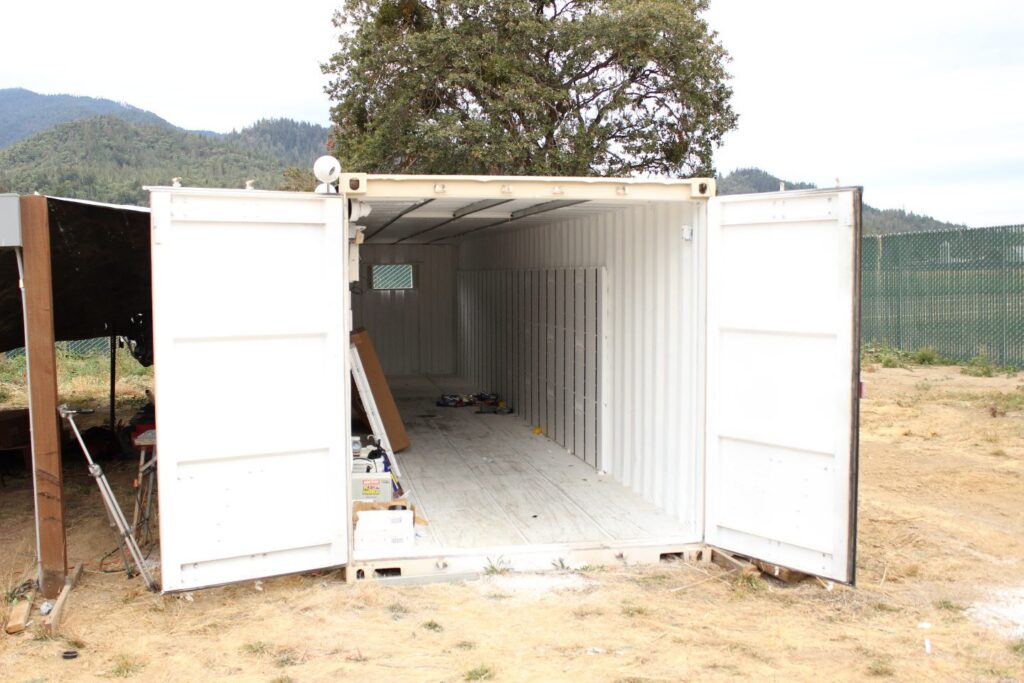When shipping container insulation is made of closed cell Expanded Polystyrene foam, the result has strong insulating power. InSoFast insulation outperforms competing insulation methods with higher R-values and can be installed in a straightforward process that doesn’t require specialized skills or tools.
Conventional options for insulation in shipping containers are problematic. Our panels are non-porous, preventing heat and moisture from transferring through them. Instead of requiring a bulky frame, as most insulation products do, InSoFast insulation panels provide a built-in, non-conductive frame as a co-existing feature.

The Design of InSoFast Insulation
Continuous insulation composed of interconnected panels in a wall system provides stable temperatures and maximized energy efficiency. Closed cell, injection molded EPS foam panels are appropriate as interior and exterior insulation that can be used on all flat surfaces – including those in shipping containers.
Closed cell foam insulation is twice as strong per inch as open cell foam. The panels are extremely dense and non-porous with a strength that can sustain far more extreme weather than open-cell insulation. The R-value indicates the insulation’s resistance to thermal loss with higher labelled R-values indicating stronger insulation. The airtight fit of the insulation system outperforms alternative insulation with higher R-values.
The InSoFast CX44 Container Panel line is intentionally designed to naturally fit along the side walls of containers in an 11” repetitive pattern. Accompanying features include a rot-resistant frame, moisture control channels, and electric wiring raceways. The 2” thick panel and built-in frame mean that more usable space remains.
Install these panels horizontally so that the studs and corrugated ribs match up and provide a place for adhesion with Loctite PL Premium 3X Stronger Construction Adhesive.
Insulating a Shipping Container Project with InSerts
The end wall and side wall InSerts are EPS sleeves that fill up the corrugated recesses of the container. When they’re affixed to the shipping container’s interior side, the smooth surface will be ready to receive a layer of InSoFast interior insulation panels. You’ll choose between the UX 2.0 and EXi 2.5 insulation to install the level of insulation that’s most appropriate for your project.
Framing the Container with InSoFast CX-LP LowPro Embedded Studs
InSoFast insulation panels often include non-ferrous embedded studs, and the new InSoFast product line – the InSoFast CX-LP LowPro Embedded Studs – provides the rot-resistant frame without the bulk of an entire panel. Application should include affixing InSerts within recessed spaces, adhesion of the studs along the ribs, and any generic rigid foam board filling up the space between the two.
When building your shipping container, your InSoFast insulation will need to be followed by application of drywall. Our panels provide a solid place of purchase for application. Enhancing the look with any trim or baseboards will be equally straightforward.
Once you’ve identified the right InSoFast insulation product line, give us a call to order a kit of shipping container insulation. We provide standard kits for containers that measure 20’ or 40’ with 8’ or high cube 9’ ceilings as well as customized measurement options. We can also provide help with choosing the right material as well as directing you in taking the appropriate measurements.
A shipping container outfitted with InSoFast foam insulation panels will be airtight, cozy, dry, and quiet. Give our website a shot by perusing our videos, articles, how-tos, and other helpful info. Our number is (888) 501-7899, and our helpful team welcomes the opportunity to spread the word about the magic of InSoFast insulation products.


